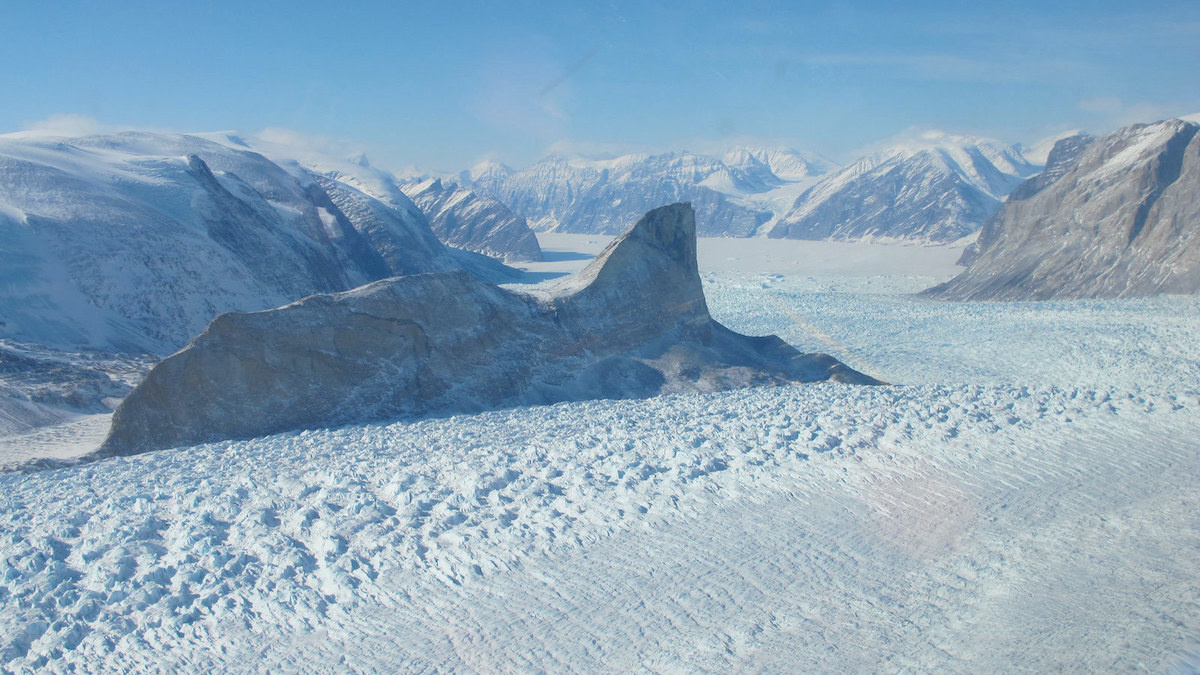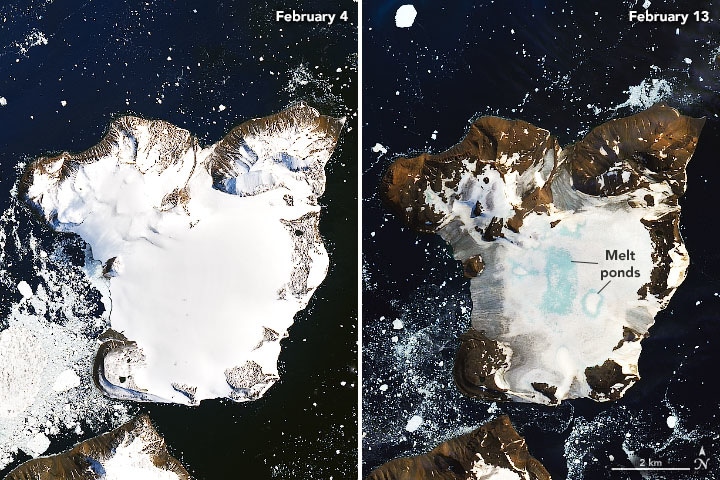
Antarctica and Greenland Raised Sea Levels More Than Half an Inch in Just 16 Years, New NASA Data Shows

Greenland's fast-melting Kangerdlugssup glacier. NASA / Jim Yungel
Greenland and Antarctica have raised global sea levels by more than half an inch in the last 16 years, according to data from the most advanced laser that the National Aeronautics and Space Administration (NASA) has ever launched into space to observe the earth.
While the figures themselves are consistent with other studies, as The New York Times pointed out, the satellite laser allows researchers a much more precise picture of how polar ice is changing over time, which helps determine the role of the climate crisis and plan for future sea level rise.
“We’ve all been waiting for this new dataset,” Lamont-Doherty Earth Observatory research professor Robin Bell told NPR.
The study, published in Science Thursday, combines data from two NASA satellites: the original Ice, Cloud and land Elevation Satellite (ICESat), which took measurements from 2003 to 2009, and ICESat-2, launched in 2018. The two satellites allowed researchers to measure changes in ice mass from 2003 to 2019, and to calculate that Greenland and Antarctica contributed 0.55 inches to sea level rise during that time. That’s around a third of the global total, which was also driven by the expansion of oceans as they warm, NPR explained.
“If you watch a glacier or ice sheet for a month, or a year, you’re not going to learn much about what the climate is doing to it,” University of Washington glaciologist and lead study author Ben Smith said in a NASA press release. “We now have a 16-year span between ICESat and ICESat-2 and can be much more confident that the changes we’re seeing in the ice have to do with the long-term changes in the climate.”
The data also revealed that Greenland’s ice sheet lost an average of 200 gigatons of ice per year and Antarctica’s lost an average of 118. That’s more than 5,000 gigatons total, NPR reported. To put that in perspective, one gigaton is enough to fill 400,000 Olympic-sized swimming pools.
But the satellite data also helped show how the ice was being lost. In Antarctica, the East actually gained mass, probably because of increased precipitation, The New York Times reported. But this was offset by losses in West Antarctica and the Antarctic Peninsula. In West Antarctica, 30 percent of that loss was due to floating ice, which either calves icebergs or melts from below due to warm ocean water. While this ice cannot contribute directly to sea level rise because it is already floating, its loss destabilizes the so-called “grounded ice” that can.
“It’s like an apple tart and the ice shelves are like the wall of pastry around the edges of the tart,” Scripps Institution of Oceanography at the University of California-San Diego glaciologist and study coauthor Helen Fricker explained to NPR. “And if those walls are too thin or they’re not baked well enough, then the filling will ooze out.”
In Greenland, two thirds of the ice loss was due to surface melting, something that rarely occurs in Antarctica, The New York Times said. Greenland also lost a lot of mass from its coastal glaciers, according to NASA. Its Kangerdulgssuaq and Jakobshavn glaciers have shrunken by 14 to 20 feet per year.
NASA explained why its satellites were able to provide such a detailed portrait:
ICESat-2’s instrument is a laser altimeter, which sends 10,000 pulses of light a second down to Earth’s surface, and times how long it takes to return to the satellite – to within a billionth of a second. The instrument’s pulse rate allows for a dense map of measurement over the ice sheet; its high precision allows scientists to determine how much an ice sheet changes over a year to within an inch.
The researchers took tracks of earlier ICESat measurements and overlaid the tracks of ICESat-2 measurements from 2019, and took data from the tens of millions of sites where the two data sets intersected. That gave them the elevation change, but to get to how much ice has been lost, the researchers developed a new model to convert volume change to mass change. The model calculated densities across the ice sheets to allow the total mass loss to be calculated.
This level of detail is essential for helping coastal residents and governments plan for sea level rise, which is expected to reach two to six feet by 2100, according to CNBC.
“Our goal is to be able to tell every coastal community what they can plan on [in] the coming decades,” Bell told NPR. “To be able to do that, we both need to measure how the ice is changing but also understand better why it’s changing.”

Antarctica before and after its hottest day on record Feb. 6. NASA Earth Observatory images by Joshua Stevens, using Landsat data from the U.S. Geological Survey and GEOS-5 data from the Global Modeling and Assimilation Office at NASA GSFC.
- Greenland Lost 600 Billion Tons of Ice Last Summer, Raising Sea ...
- Scientist Suggests After Finding Warm Waters Below Greenland
- Trump Wants to Eliminate NASA's Climate Research Programs ...
- Greenland and Antarctica Already Melting at 'Worst-Case-Scenario' Rates - EcoWatch

 233k
233k  41k
41k  Subscribe
Subscribe 